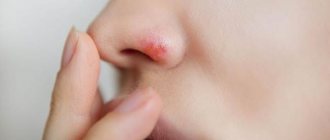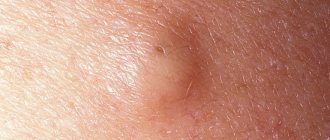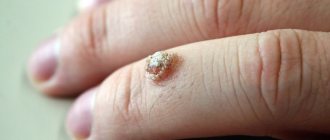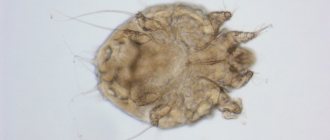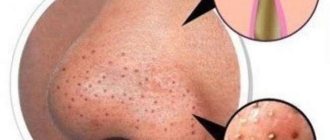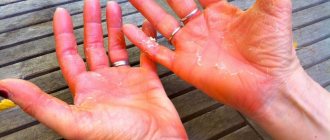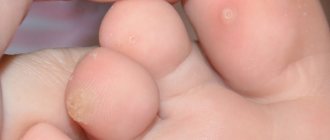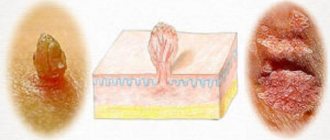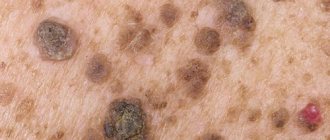Causes and symptoms
It is difficult to say why the yellowish plaques shown in the photo appear on the body. Experts identify several patterns and risk factors:
- metabolic disorders, namely problems associated with lipid metabolism;
- obesity;
- diabetes;
- liver diseases;
- pathology of the pancreas.
According to some studies, the formation of xanthelasma may indicate problems with the cardiovascular system. Thus, atherosclerosis was found in some patients.
All plaques are straw-yellow in color . They are soft to the touch and their surface is quite smooth. Sometimes several formations located nearby merge into one. The main places of localization are considered to be the upper and lower eyelids.
Xanthelasma is recognized as a benign neoplasm. Science knows of no cases in which a plaque became malignant. In addition, pain and any discomfort are excluded.
As a rule, growths occur in older women . Although men also sometimes encounter such a cosmetic defect. Education develops gradually. First, a tiny nodule appears on the eyelid, which gradually reaches the size of a large bean.
Xanthelasma removal
Such neoplasms never disappear on their own . Moreover, their number may increase. To avoid this, you should identify possible causes and eliminate them, but this does not always help.
Most often, growths are removed. Although such neoplasms are completely harmless, they spoil the appearance .
- Cryodestruction involves applying liquid nitrogen to the damaged area of the skin. The exposure time is determined by the doctor depending on the size of the plaque and some other factors.
- Laser removal is considered gentle, because during the procedure there is no risk of injury to healthy tissue. This method is completely painless and safe. Immediately after removal, the patient can go home. There will be no scars at the site of xanthelasma.
- The radio wave method is also safe because it is non-contact. Thanks to high-frequency waves, the cells of the growth heat up and begin to evaporate, while the patient does not feel pain or discomfort.
- Surgery involves local anesthesia. Scissors and tweezers are used to remove plaques. The rehabilitation period lasts 1–2 weeks. During this time, the wound tightens and heals. The disadvantage of the procedure is the possible formation of a scar.
- Electrocoagulation is sometimes used in conjunction with surgical excision. So, after removing the growth, the edges of the wound are connected and then cauterized with an electrode. A crust forms at this place, after which no traces remain.
Diagnostics
The diagnosis is made based on external examination. A patient who has characteristic neoplasms on the upper eyelid should undergo a consultation with two specialists:
First, a diascopy must be performed. This procedure involves pressing on the plaque with a glass slide. During this, it is bled, thanks to which it is possible to accurately determine the color of the neoplasm.
Xanthelasma should be distinguished from xanthoma. The first type of skin defect occurs only on the upper eyelid, and the second - on any part of the body.
A proven drug to combat the symptoms of glaucoma is Cosopt eye drops.
The endocrinologist should refer the patient for examination of lipid metabolism. If a violation is detected, the doctor will prescribe appropriate therapy.
This article will help you determine the causes and methods of treating red whites of the eyes.
Treatment at home
You can try to get rid of xanthelasma at home. However, this must be done carefully, since even folk remedies have their contraindications. It is best to consult your doctor first.
It is worth giving preference to herbal compositions that will improve lipid metabolism and facilitate the functioning of the pancreas and liver.
- In 1 tbsp. boiling water you need to brew 20 g of birch buds. Drink the finished infusion 2 tbsp. l. three times a day.
- 2 tsp. dry crushed yarrow is poured into 1 tbsp. boiling water and leave for an hour. The liquid is filtered and divided into 4 doses.
- You can take a decoction of dandelion root. To prepare this product you will need 1 tbsp. water and 1 tsp. dried herb.
- An infusion of mint, immortelle and rose hips provides a good effect. Take 100 g of all ingredients and pour 3 tbsp. boiling water The mixture should be infused for 4 hours.
How to treat xanthelasma of the eyelids
There are no specific guidelines for which doctor treats eyelid xanthelasma. There is no specific treatment for these neoplasms. It is important to identify the disease that caused their formation and begin its treatment.
Diet
Since in most cases, neoplasms appear against the background of impaired fat metabolism, the patient is prescribed an appropriate diet. It is recommended to exclude foods that contain a lot of cholesterol from your diet:
- fatty meats and fish;
- butter;
- high fat dairy products;
- nuts, seeds;
- alcohol;
- sweets.
The diet should consist of foods that promote the rapid breakdown of fats and cholesterol. These include:
- dairy products;
- cereal dishes;
- vegetables and fruits;
- greenery.
Be sure to drink at least one and a half liters of clean water per day. Periodically, it is allowed to follow a strict plant-based diet - for a month, then switch to a more expanded diet.
Drug therapy
Medicines are prescribed according to the underlying disease.
- For confirmed atherosclerosis, antihyperlipidemic drugs are indicated. Four main groups are used - statins, fibrates, bile acids, cholestyramine. The drugs are prescribed to be taken for a long time, usually throughout life.
- If a person is diagnosed with diabetes, treatment is prescribed depending on its type. For the first type, different types of insulin are prescribed. In the second type, tableted hypoglycemic drugs are indicated.
- For endocrine disorders, hormonal agents are indicated.
Taking medications does not guarantee the complete disappearance of xanthelasma on the eyelids. They decrease somewhat in volume, but persist even during long-term treatment.
Local treatment is carried out at home. It consists of using some ointments and solutions.
- "Solcoderm" is a cauterizing solution that destroys tumor tissue. It must be used to treat eyelids with great care to avoid developing skin burns.
- Zinc-ichthyol ointment. Has a drying and anti-inflammatory effect. Apply to the tumor in the morning and evening, treatment lasts at least 3 weeks.
- Yellow mercury ointment.
Local agents also do not have a significant effect.
Surgical intervention
Radical removal of xanthelasma from the eyelid is performed surgically. There are several ways to do this:
- peeling fat deposits with a scalpel is the most traumatic operation;
- laser removal – the procedure is carried out quickly, does not cause pain, and does not form a scar;
- cauterization with nitrogen - applicable only for small tumors;
- The radio wave method for removing xanthelasmas is possible for hard-to-reach and multiple xanthomas.
The choice of surgical method depends on the location of the plaque, its size and the patient’s wishes.
Watch the video to see how the tumor is removed with a laser:
Folk remedies
For xanthelasmas of the eyelids, treatment with folk remedies is possible, but it is not highly effective.
- To normalize liver function, a rosehip decoction is prescribed. It is prepared as follows: pour 100 grams of berries with a liter of boiling water and let it brew for an hour. Take 50 ml in the morning. Duration of treatment is at least a month.
- Honey dough. Take an egg and a spoonful of honey. Add flour to make a thick dough. Apply as a compress to the eyelid. Leave for 15 minutes, then rinse with water. The procedure is repeated every other day for two weeks.
- Take equal parts of sour cream, salt and honey. Mix and apply to the eyelid for half an hour. Then wash off with cool water. The procedure is repeated every evening for 14 days.
- Bake the onion until soft, then mash with a fork. The paste is applied to a cotton swab and applied to the eyelid for two hours. The procedure is repeated every evening for ten days.
- Cut a piece of aloe leaf and apply it to the affected eyelid for 10 minutes. The procedure is done every evening for a month.
You can use any folk remedies only if you are not allergic to the constituent components.
Dietary recommendations
is to some extent , you should reconsider your diet.
- It is important to limit the amount of animal fats. We are talking about offal and fatty meats. It is better to use vegetable oil instead of butter.
- You should add at least 300 g of vegetables, except potatoes, and 200 g of fruit to your daily diet.
- You should consume fiber and avoid flour products made from premium flour. It is important to add bran bread, brown rice, oats, buckwheat, lentils and beans to your diet.
- Be aware of omega-3 fatty acids, which are found in flaxseeds, fish and nuts.
about 1.5 liters of water per day and giving up bad habits, including alcohol and smoking.
Preventive measures
To minimize the likelihood of developing xanthelasma, it is worth taking measures to prevent disorders that can lead to the formation of plaques.
- It is important to monitor your weight to avoid obesity.
- It is worth reviewing your diet, reducing the amount of fatty foods and adding fresh fruits and vegetables.
- Possible skin injury should be avoided.
- If desired, you can take decoctions aimed at normalizing lipid metabolism.
Yellow plaques that form on the eyelids are considered benign. Xanthelasmas do not disappear on their own, which means that, if necessary, they will have to be removed using a laser or another method. To avoid reappearance of the growth, it is worth adjusting lipid metabolism.
Xanthelasma and its symptoms
Diagnostic measures
If yellowish plaques appear on the eyelids, you should consult a dermatologist or endocrinologist. Experts can accurately diagnose xanthelasma during a visual examination using diascopy. The method involves pressing a glass slide onto the plaques, which leads to bleeding of the area. This allows the doctor to clearly determine the color and contours of the tumor.
You will also need to determine the level of cholesterol, glucose, lipoproteins in the bloodstream, and conduct a comprehensive diagnosis of fat metabolism. In some cases, histological examination is required to differentiate xanthelasma from a wen, molluscum, dermal cyst, syringoma, elastic pseudoxanthoma.
